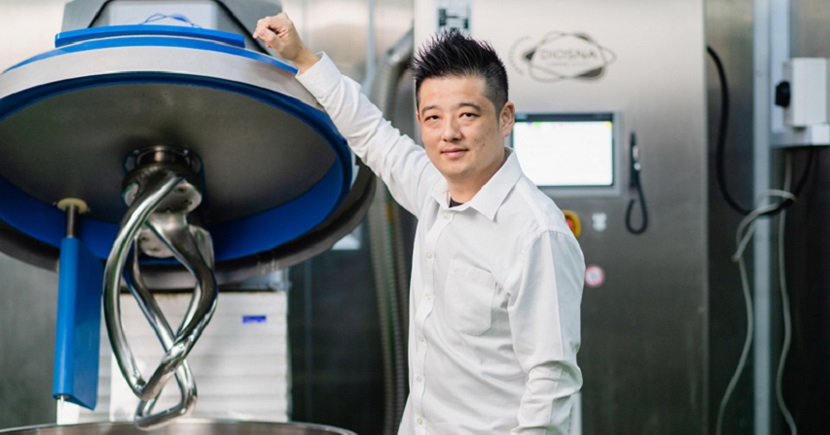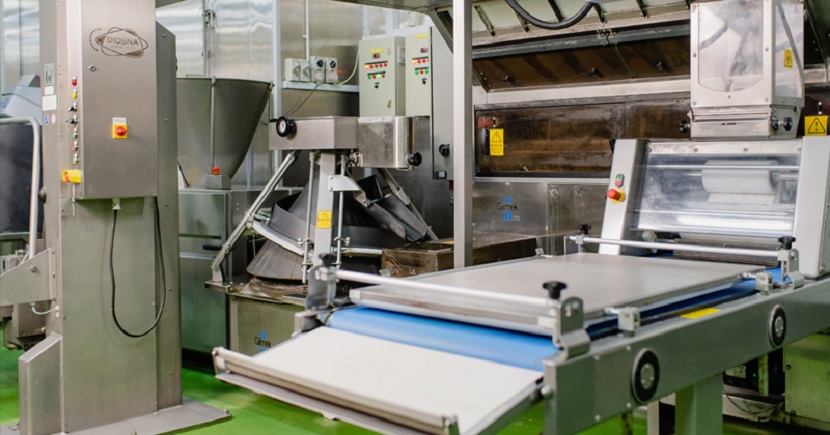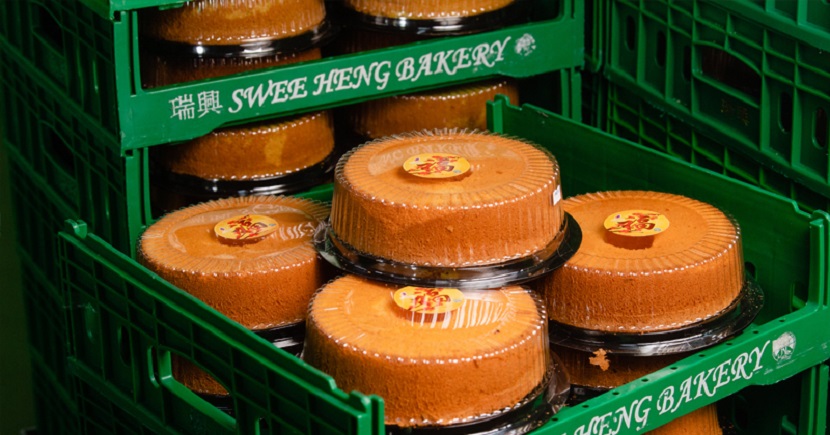First published in The Straits Times on 06 February 2020.
Throw in a dash of innovation and a mixture of high-tech machines, and you get a local bakery that has grown from a humble outfit of just 10 employees to a household name with more than 60 retail outlets island-wide and a total staff strength of 760.
Such has been the impact of automation on heritage brand Swee Heng’s output and revenue.
Founded in 1989 by Mr Ng Chai Huat, 75, and his wife Madam Ong Chu Eng, 66, Swee Heng started life as a tiny shop churning out pastries by hand in Yuhua Village at Jurong East with a start-up capital of $240,000.
When the company moved its central kitchen from Senoko Crescent to a larger 6,000 sq m facility in Senoko Avenue in 2017 to scale up production, executive director Eric Ng knew that it had to introduce labour-saving processes.
“With the new factory, we could double or even triple our output, but manpower was a problem,” said the 40-year-old.
“Not many Singaporeans want to join our industry because the work is hard and the hours are long. If we wanted to increase our quantity, we needed machines.”

Over the last three years, Swee Heng invested more than $2 million in machines that automate cake-making processes. The move paid off. These machines mix batter, slice sponge cakes and fry doughnuts, helping the company to grow its output and improve the consistency of its products.
Previously, for example, employees would use long chopsticks to flip doughnuts in woks of oil to ensure that they were fried on both sides.
“Sometimes, the doughnuts ended up being burnt or too dark on one side. Our staff also had to be careful to avoid getting splashed by oil,” said Mr Ng, the youngest son of Swee Heng’s founders.
Other times, sponge cakes that were sliced manually would end up uneven or broken.
Using automated fryers, cutters and mixers solved these issues. The company now produces 2,200 boxes of Swiss rolls and 2,000 doughnuts daily — more than two times its former output when the bakery was still operating out of a smaller central kitchen.
It also replaced its manual resource planning processes with an online system, known as the Enterprise Resource Planning System (ERPS), to smooth back-end business operations.
Before, its retail outlets would fax orders for products and raw materials to a centralised fulfilment department. The department would then add up the requests and relay the information to production units in charge of preparing the materials for dispatch to the outlets.
“It was not very efficient. Sometimes, there were miscalculations or miscommunications that affected the fulfilment of daily orders,” said Mr Ng.
Productivity push: no piece of cake
Today, outlets key in their orders in the ERPS, which collates the figures, computes the exact number of product batches needed, works out the amount of raw materials required, and transmits the data to the production units.
The system also adds up the outlets’ sales figures at the end of each work day and updates the company’s finance department.
“It’s all linked. The system is very fast, saves a lot of paper and reduces mistakes,” said Mr Ng.
With these automation projects, Swee Heng was able to increase its production volume by 50 per cent between 2017 and 2019 and free up manpower for other value-adding areas of the business.
When the firm moved into its new Senoko premises, it had about 70 production staff. Some were trained to operate the new machines. The rest, along with about 30 new hires, were trained to perform tasks beyond the capabilities of machines, such as cake decoration and the shaping of dough.
Mr Ng stressed that the company sees its productivity push as a continuous journey, not a one-off effort.
“We have a monthly meeting with our production managers and heads to discuss challenges. It’s important to be flexible, seize on opportunities and be open to change,” he said.

Production manager Tan Wei Lun, 35, admitted that productivity efforts come with their share of challenges. When the firm invested in machines, some employees feared losing their jobs.
“They were afraid that they would be replaced by the machines, and said things like the machines are lousy, that we shouldn’t use them, and that handmade products are better,” said Mr Tan.
“You have to explain that it’s not possible to rely on manpower alone. We still need our staff. We just need them to learn and do things that machines cannot.”
The company’s management team also consults suppliers and industry friends, and attends product exhibitions regularly, to keep abreast of technological advances and trends.
It has built strong relationships with partners such as enterprise development agency Enterprise Singapore, which provides advice about technologies available in the market and other forms of support.
Mr Ng said: “If you want to grow and excel in your business, you have to invest in productivity. We’re always looking at what we can do to improve, and have even more projects in the pipeline this year.”

3 lessons from Swee Heng’s innovation journey
1. Invest in R&D
When Swee Heng expanded its retail outlets into malls in 2014, it knew it needed to come up with new products to attract shoppers’ attention.
The local bakery was known for its breads and cakes sold in neighbourhood shops, but lacked unique products that would attract customers at a mall.
In 2015, the firm set up a research and development (R&D) unit to create new recipes and spins on local flavours to appeal to younger consumers.
2. Knead connections
Swee Heng’s R&D chief Khoo Boo Soon, 38, said the firm relies on partnerships to continuously spur diverse ideas.
In 2019, it collaborated with the Employment and Employability Institute to launch the HaloSingapo series of bakes, inspired by local flavours and dishes such as nasi lemak, chicken rendang, chendol and pandan.
“Many companies want to supply raw materials to us, so we also work with them to see if we can sell new items made with their materials,” said Mr Khoo.
Such collaborations include regular demonstration sessions, where suppliers can showcase bakes developed by their in-house or hired chefs.
3. Stay on your toes
After Swee Heng’s R&D unit comes up with new products, it teaches the production staff to make them and stays on the production floor for a few days to iron out kinks.
“If we see something we like, it will be in our shops within two weeks. Speed is key, especially for trendy items,” said Swee Heng’s executive director Eric Ng. “If you have an opportunity, take it and take it quickly.”
Milestones
- 1989: Swee Heng founders Ng Chai Huat and Ong Chu Eng open their first shop in Jurong with a start-up capital of $240,000.
- 2004: The firm opens its first central kitchen at Senoko Crescent.
- 2014: It launches its modern bakery concept Swee Heng 1989 Classic to target younger consumers.
- 2017: The first Swee Heng 1989 Bakery Café opens at the SingPost Centre in Eunos. The firm moves into a larger central kitchen in Senoko Avenue and carries out its first major automation project.
- 2018: Swee Heng implements an Enterprise Resource Planning System to automate back-end business processes.
- 2019: It completes a third automation project to improve the mixing and dividing of dough for flavoured toasts, loaves and pizzas.


